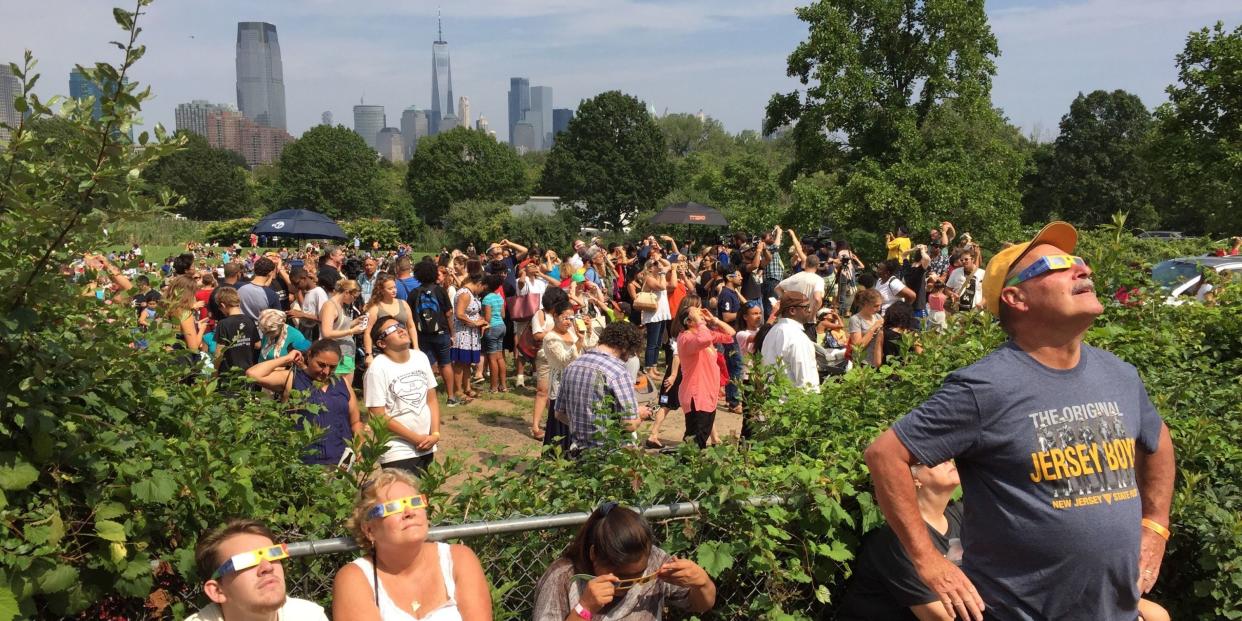Done With Your Eclipse Glasses? Donate Them to Kids In South America

When the moon aligned with the sun on Monday, millions of people across the United States donned goofy eclipse glasses to gawk at the spectacle in the sky. Today, those glasses aren't quite as valuable as they were this time yesterday. There are really only two things to do with those solar-filter glasses now: Save them for the next eclipse, or donate them to a good cause.
As long as your glasses are of the latest safety standards (see below) and they are not scratched or punctured, you can hang on to them for the next eclipse. In North America, the shadow of a total solar eclipse will return April 8, 2024, sweeping across Mexico and up northeast through Texas, Arkansas, Illinois, Indiana, Ohio, New York, Vermont, and Maine. So if you're planning to view eclipse 2024, you might want to keep the eyewear so you don't have to wait in line again seven years from now. If you're the traveling type, consider that the world's next total solar eclipse will happen in South America, bathing parts of Chile and Argentina in shadow just before sunset on July 2, 2019. There are also a number of partial and annular solar eclipses across the world in the coming years that you can use your glasses for.
However, if you don't expect to need them in the near future, why not donate your eclipse glasses to a good cause? Astronomers Without Borders will be collecting used eclipse glasses to bring to Chile and Argentina in 2019 to hand them out to families to see the total solar eclipse that year. It's a wonderful educational opportunity for a number of communities who might not have access to the glasses they need to safely view the eclipse, and Americans now have truckloads of eclipse glasses they don't need anymore. You can check with the distributor you ordered your glasses from to see if they are participating, and you can learn more about donating your glasses at the Astronomers Without Borders website.
The first thing you should do is check to see what kind of glasses you have. The International Organization for Standardization (ISO) sets standards for eclipse glasses, and while glasses with the newest certification can be used indefinitely, some other glasses have an expiration date of about 3 years. From NASA:
If your eclipse glasses or viewers are compliant with the ISO 12312-2 safety standard, you may look at the uneclipsed or partially eclipsed Sun through them for as long as you wish. Furthermore, if the filters aren't scratched, punctured, or torn, you may reuse them indefinitely. Some glasses/viewers are printed with warnings stating that you shouldn't look through them for more than 3 minutes at a time and that you should discard them if they are more than 3 years old. Such warnings are outdated and do not apply to eclipse viewers compliant with the ISO 12312-2 standard adopted in 2015. To make sure you get (or got) your eclipse glasses/viewers from a supplier of ISO-compliant products, see the American Astronomical Society (AAS) Reputable Vendors of Solar Filters & Viewers page.
So if you have ISO 12312-2 certified glasses, you can hang on to them for the next eclipse. Or give them to a child in South America so in about two years time he or she can enjoy the spectacular phenomenon you witnessed yesterday.
Source: Astronomers Without Borders
You Might Also Like

